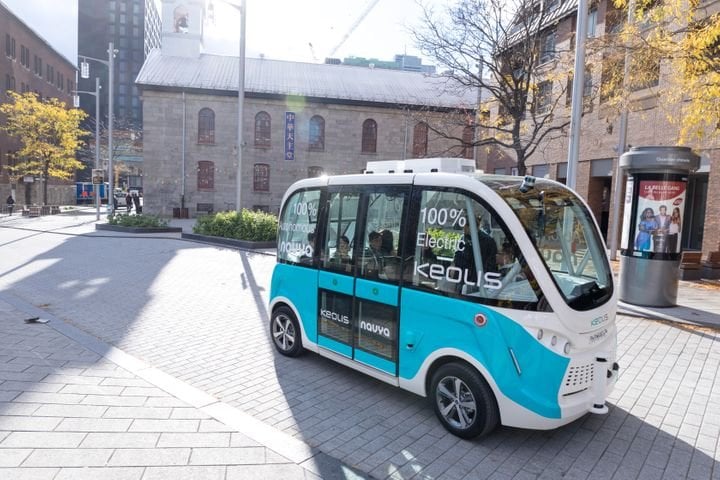This article was originally published on May 2, 2022 in Metro Magazine.
In the first two articles of this series, I discussed what can be done to make public transit Americans’ first choice for getting around. I also shared how transit agencies can be effective with the windfall from the CARES Act and the bipartisan infrastructure deal. A common thread between these two ideas is the assistance provided by private industry — particularly transit operators like Keolis.
It is important to note that that this piece is not an endorsement of carte blanche privatization of public transit. At Keolis, we view the client-operator relationship as invaluable for delivering accountability to the taxpayer and quality of service to our passengers. However, there are opportunities to advance this relationship beyond day-to-day operations and maintenance.
In Europe, it’s common for transit agencies to form consortiums that together set clear long-term goals for their networks with the private operator. These goals can include expanding equity of access, growing ridership, and/or transitioning to more efficient energy sources like hydrogen fuel cells. If we deepen these client-operator relationships with highly competitive bidding, long-term contracting, and revenue-share agreements we can maximize the opportunities made available from recent federal investment. These approaches to contract management can give operators more commercial incentive to build sustainable growth in ridership and expand service. Those actions create a virtuous cycle of increased sense of community ownership of a network — which future-proofs them from future disruptions like that of the pandemic or recessions.
One way to create this virtuous cycle and future-proof networks is with an intense focus on the passenger experience and amenities. Consider how consumers now order goods like paper towels from a deliver service such as Amazon or GoPuff: the applications buyers use to place their order are designed for an intuitive and seamless customer experience, and your goods are often delivered to your front door the same day if not in mere hours.
Taking the next step
Now expand the paper towel example to transit: In many American cities, opening Google Maps is only one step in a longer trip-planning process. After identifying the route, passengers may then have to open another app, visit a kiosk, or find cash to begin their journey. They may also have to transfer between modes that have different fare structures, (changing between a bus and a commuter train, for example). Simplifying this process and giving passengers options that better meet their needs are functions that private operators are best positioned to deliver on. In Dijon, France, for example, Keolis operates a comprehensive mobility contract. Extended for another six years in 2017, this contract covers paratransit services, buses, tram lines, car parks, and shared-bike rentals. All these services are available with the same ticketing platform. Parking lots are even free when validated using a tram ticket. In partnership with the public transit agency, Keolis in Dijon has a clear mandate to increase accessibility and system patronage across a range of ridership demographics. Between 2010 and 2018, use of the Dijon network has grown by approximately 26%.
There is also a clear link between passenger satisfaction and equipment maintenance and performance. Private transit operators are typically entrusted with the rolling stock, infrastructure, and other assets that make up a network. Transit agencies, themselves, are unlikely to have resources necessary to implement sophisticated business programs that can help manage fleets comprised of different equipment types, with different maintenance cycles, and with different parts and supplies. And so, many Keolis networks have introduced KHIM (Keolis Harmonized and Industrialized Maintenance). In the U.S., this maintenance improvement program has even helped one network reach a seven year high for miles between road calls.
KHIM is one example of the deeper pool of resources and idea-sharing readily available to private organizations. Working across borders, businesses like Keolis can see around corners and implement innovative technologies, management processes, and even draw from talent pipelines or existing supply chains to support local markets. These are resources we hope more public transit agencies will maximize as they work to modernize their networks.
Bringing innovation to transit
The role of private sector contractors is to help public transit authorities achieve their goals for passengers, which improves the health and livability of the broader community and protects the taxpayer. But operators perform best in a competitive environment that encourages them to bring the very best ideas forward. The time could not be more perfect for transit agencies to maximize the benefit they receive from their partnerships with private operators. Together, we can introduce new innovations in transit, improve the passenger experience and sustain the transformation of networks that has already begun.
